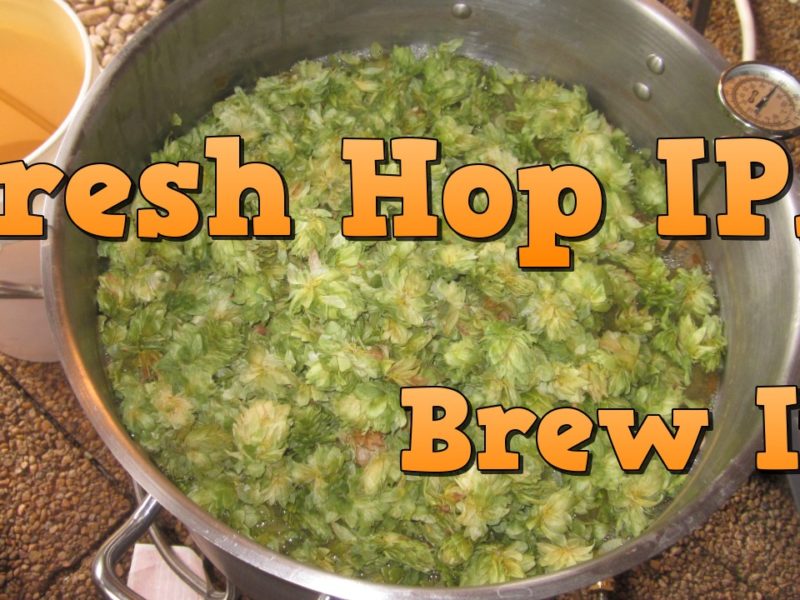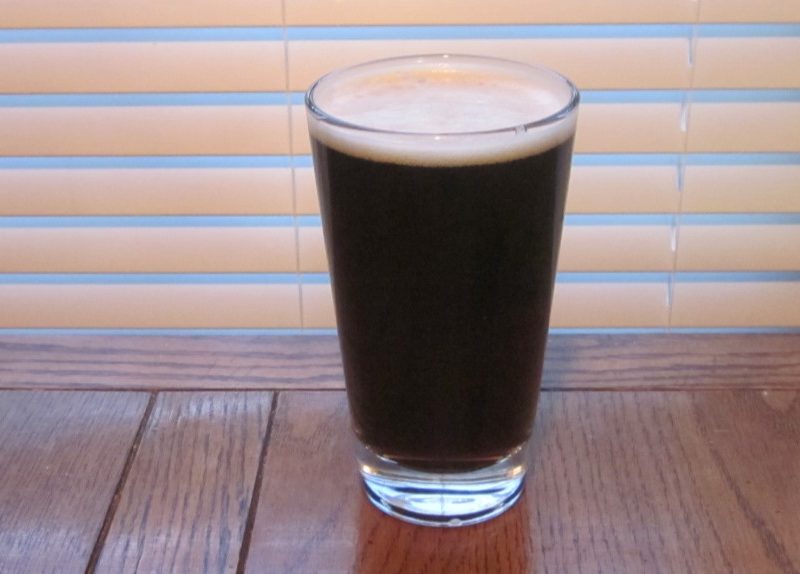It is March 2021 and I am planning to brew my first Pale Ale. Well, my first Pale Ale of 2021, that is. For as long as I can remember, the American Pale Ale style has been a core of my brewing routine. I have a desire to add a Modern Pale Ale to my recipe list. I wonder if, just maybe, Kveik will give me something unique.
My Pale Ale Brewing History
Before thinking about adding a Modern Pale Ale recipe to my book, let’s first look back and how I got here.
House Favorite Recipe
Many years ago, I brewed a batch of classic American Pale Ale based on a Deschutes Mirror Pond or Sierra Nevada Pale Ale clone. I was hooked! It had a very simple grain bill and was 100% Cascade. This became my most brewed recipe. It is a beer that I love to drink and my wine or Lite drinking friends also enjoy.
I have vague memories of the recipe starting out using 3 oz of Cascade hops. It probably did not start off with a dry hop addition. In any case, my most brewed version looked something like this (5 gallon batch):
- 9 lbs American Pale/2-Row (90%)
- 1 lb Crystal 60 (10%)
- 1 oz Cascade at 60 min
- 1 oz Cascade at 20 min
- 1 oz Cascade at 0 min (flameout)
- 1 oz Cascade Dry Hop
- WLP001 / WY1056 / Chico Yeast
This is a really nice beer and I will continue to brew it. Around 8% Crystal 60 or Crystal 40 is a sweet spot. I would also use a generic bittering hop like Columbus.
Changing Tastes and Approach
Over the years, my tastes in beer have evolved, as have the commercial Pale Ale examples.
IBUs
For the past several years, I have moved away from a “1 oz at 60 min” recipe approach to a “X IBUs at 60 min” approach. Columbus is my generic bittering hop for this style. This makes it easier to deal with the wide aa% differences in hops like Cascade. Also, I have found this approach makes it easier to hit a consistent bitterness level. On top of that, it saves a few dollars.
For memories sake, I brewed this beer in 2020 following the above recipe, but using 0.5 oz of Columbus at 60 mins. BeerSmith calculated that to 32.6 IBUs for a total of 49.9 IBUs. Moving forward, I will cut the bittering charge IBUs down to under 20.
While there has been a trend toward less bitterness in hoppy beers, I still do enjoy a balanced level of bitterness and sweetness of a good American Pale Ale. Note, I do enjoy many of the hazy, juicy beers of today; I was never a big fan of massively bitter IPAs.
Hops
I do enjoy Cascade hops, and not just because it is part of the site name. I still find it to be a wonderful balanced hop. That said, there are many classic hops that are great as well. In addition, dozens of popular varieties have been introduced in the past decade and more are released every year. While there is no way I can keep up, I enjoy trying out new varieties.
I find myself adding more hops to my beers these days with more late hops and dry hops and few mid-boil hops. My current Pale Ale hopping rates look like my IPAs of not too long ago.
Water Chemistry
My 2020 batch was also the first rebrew of this recipe since I started down the water chemistry path in 2019. My additions of some Gypsum and Epsom Salt was to target a Sulfate level of 256. I felt that might have been a little high, so tuning in a water profile for this beer is on my list. Initially I will target around 200 Sulfate. I doubt I need Epsom Salt.
Crystal Malt
I have not quite formulated my current thoughts on Crystal malt. This seems to be the malt to hate on these days. More and more I see so called IPA recipes that are near 100% Pilsner malt. Maybe they have a little character malt like Munich or Honey Malt. While my tastes have shifted to less and lighter Crystal malts, I still find this to be an important ingredient in an American Pale Ale. This is especially true for beers in the 5% range which can seem thin.
In some styles, I prefer English/European crystal malts. Maybe it is just bias, but I find them to be a little less sweet than Briess. Note, Briess calls their malt a Caramel malt, but I am just going to use the term Crystal here.
As an aside, I found that when I shifted my brewing process to reduce cold side oxidation my beers had much less caramel-character and were lighter. It made me realize that some of the character that I associated with Crystal malts was actually just oxidation.
Base Grains (Wheat? Oats?)
Over the past few years, I have done a few single grain beers to evaluate base grains. My biggest take away was not that there are “good” and “bad” options, but there are differences between barley varieties and maltsters. The barley varieties used by most North American maltsters is quite different than European maltsters. Different maltsters from the same country or region produce malts with different characters.
Also, more flavor is not always a good thing. Briess Brewer Malt (their Pale/2-Row) is a nice neutral malt with a slight grain/straw flavor. I find that it provides a very nice backbone to American Pale Ales and IPAs. I do want to play around with more options. Rahr gets good reviews.
Malted Wheat has become a bit of a cheater grain for me. I enjoy the light flavor and the extra creamy feel to the body and head I get from wheat. I find myself throwing wheat, oats or rye into recipes more, with wheat being the most common.
Yeast
Pale Ale = Chico. WLP001 and WY1056 has been my go-to yeast for this beer. I never felt much need to try out others. I did not even mess with US-05, a similar dry yeast offering. In recent times, I brewed a number of beers with WLP051 California V Ale (Anchor). I liked Chico a little better. Would Kveik will give a new spin to my American Pale Ale?
Goals for a Modern Pale Ale
Okay, so we talked a little about my house Pale Ale recipe and ways that my preferences have evolved. It is time to focus on what I want from a Modern Pale Ale recipe.
A beer that I enjoy drinking
This goal is listed first for a reason. There is something about a moderately hopped American Pale Ale that hits that sweet spot for me. This has to be a beer that I look forward to brewing and drinking.
A beer that my friends enjoy
I don’t brew light style beers, because I don’t enjoy drinking them. I am talking about styles like American Lager, Blonde Ale, Kolsch, and Pilsner. This also extends to ciders and hard seltzers. This beer will be my go-to beer for my friends that “don’t like beer”. If this beer ends up being too hoppy for them, I might just need a new set of friends!
A moderate ABV
At the pub, I am often drawn to the 7.5% NEIPA or that 12% Imperial Stout. For beers on tap at home, I enjoy having a little less kick. Around 5% ABV is my target with an OG around 1.050. I am open to a 1.045, or even 1.040, OG, but I think a little higher is an easier target. Hoppy and 6% is an IPA in my book.
A modern spin
These days, when I order a Pale Ale at the pub, I am often handed a 6.5% NEIPA. That is not the goal for my Modern Pale Ale. On the other hand, while I do enjoy a classic American Pale Ale, I am looking for a beer to fit a different slot in my recipe book. My goal is an easy drinking beer that still has some notes of bitterness and sweetness. It will showcase hop flavors and aroma and work well with new style hops, but not be dominated by hops.
An easy to brew recipe
If I am going to make this beer often, I want it to be an easy batch to brew. That means a fairly simple grain bill that is based on ingredients I normally have on stock. I plan to use my basic brewing process. Kveik yeast might make fermentation faster and easier as well.
A great base for testing hops (and other ingredients)
I have found the American Pale Ale style to be an excellent beer for trying out new ingredients. It is a light enough beer that different grains can still show through. It is an excellent base for playing around with different hops. In the future I want to brew this beer often with different hop combinations.
A beer for competitions?
I have some desire to get into competitions. I am not sure why, but probably as a bit of a yardstick on the quality of my beers. If I can consistently score well in competitions, that would be some validation that my beers don’t suck. I question if a quality 5% Pale Ale can really do well in this category when most winners are firmly in the IPA category. I don’t see this one as a competition beer.
Do you even Haze?
I used to have an anti-haze attitude. Over the years, I have learned the embrace the haze. I don’t think you can get the intense saturated hop flavors of an NEIPA without the haze. But I am not brewing an NEIPA. So haze is not my goal, and I expect my recipe will drop “homebrew clear” after a few weeks in the keg. If it turns out to have a more permanent haze, I am okay with that.
Modern Pale Ale Iteration #1
Below are my thoughts in building a Modern Pale Ale recipe that fits my above goals. Since I likely will not hit the bullseye on the first go, my plans are to brew a few iterations on this in 2021.
Grain Bill
The target for this recipe is an American Pale Ale, so an American pale/2-row seemed like a good place to start. Briess Brewers Malt is the grain I have the most experience with. Rahr is a maltster that gets good feedback, so I just ordered a bag of their Standard 2-Row. I am not opposed to a more flavorful Pale Ale malt or trying out a craft malt.
I could just throw wheat at this recipe like I do for many recipes. Instead,10% flaked oat seems like something different. 5% Crystal 40 also seems like a good starting place for some color, body and sweetness. Quaker for the oats, and Briess for the Crystal. Keeping this American.
Hops
This beer should have some bitterness, so I am going to start off with around 20 IBUs from a bittering charge from Columbus or Warrior. From there I am just looking for some hop flavors and aroma. I am thinking about 1 oz of late boil/whirlpool hops and 1 oz of dry hops (keeping in mind this is a 2.5 gal batch). That is the hopping schedule I used for a hoppy pale ale back in 2019. The 2 oz of flavor/aroma hops makes it easy to combine 2 different hops in 1 oz quantities, or use a single 2 oz package of hops. I am on the fence about flameout or whirlpool additions.
Note that I am not 100% on board with the IBU calculations I see from late boil and whirlpool additions. Experience shows they add bitterness, but not nearly the bitterness from 60 min boil additions. Plus, didn’t somebody claim that the IBU was a lie anyway?
Right now, I have a bunch of Citra, Mosaic and Simcoe in my freezer. My first attempts will be combos of those hops, but my goal is a base beer that I can use to play around with various hop combos.
More American ingredients!
Water Chemistry
My tap water is a little higher in Chloride than Sulfate. I will be adding some Gypsum to bring my Sulfate level up to around 200 ppm, and will work with my tap water base of around 70 ppm of Chloride. In the future, I might play around with lowering the Sulfate level and/or raising the Chloride level. History has told me that around 10 ml of 10% Phosphoric Acid should bring my pH into a good range. I am basically just applying the Pale Ale and IPA water strategy that has worked for me.
Yeast
I have been interested in two things. A Pale Ale that was different than my standard recipe and a reason to play around with Kveik yeast. I am excited to try and tick both boxes with this recipe. My only Kveik brewing experience comes from an IPA made with Voss Kveik (from Omega). It was a wonderful beer. I still have some Voss Kveik around, so I will start there. Moving forward I plan to play around with different Kveik offerings and also try out different pitch rates and fermentation temps.
Wait, Kveik is not American!
Recipe
Below are my current thoughts on a recipe for my first stab at my Modern Pale Ale. I am planning this as a 2.5 gallon batch. I hope to brew this soon (week of March 8, 2021).
- Grain Bill
- 4 lbs 4 oz (85%) American 2-Row – Rahr
- 8 oz (10%) Flaked Oats – Quaker
- 4 oz (5%) Crystal 40 – Briess
- Hops
- 0.2 oz (20.1 IBU) Columbus/CTZ: Boil 30 mins
- 0.25 oz (10.4 IBU) Citra: Boil 10 min
- 0.25 oz (8.3 IBU) Mosaic: Boil 10 min
- 0.25 oz (4.5 IBU) Citra: Flameout
- 0.25 oz (3.6 IBU) Mosaic: Flameout
- 0.5 oz Citra: Dry Hop 2-4 Days
- 0.5 oz Mosaic: Dry Hop 2-4 Days
- Yeast
- Omega Voss Kveik at 85F
- Water Adjustments
- 4.5 g Gypsum
- 10 ml Phosphoric Acid (10%)
- Specs
- OG: 1.049 | FG: 1.010 | ABV:5.1%
- IBU: 46.9 | SRM: 5.6|Efficiency: 70%
- Mash: 153F for 60 min | Boil: 30 min | Ferment: 85F
Next Steps
Be sure to check back. My next article on this topic will contain the final details of my recipe, some notes on my brew day, pictures of the actual beer and tasting notes. I want to give the beer at least a few weeks in the keg to settle out. If all goes as planned, this puts a target update for sometime in April.
March 21, 2021 Update
The beer is brewed! I brewed a 2.5 gal batch on 3/20. It fermented like mad for a day and is close to final gravity. I will let it finish up, chill, then add the dry hops. I should be on track to evaluate this beer in April, and maybe post a video of the brew day and tasting!
April 2021 Update
The brew day video has been posted:
This batch turned out very good. So good that I ended up brewing a second batch. I recently picked up a floating dip tube (FLOTit branded), and I wanted to try out fermenting in a keg. Since I did not figure out a strategy for dry hopping in the keg, so I moved the dry hop addition to a 170F hopstand.
In addition, while the first batch fermented at 85F was very good, the Voss character was a bit dominant. If the goal of this recipe was to showcase different hops and grains, I needed to lessen the “sweet orange” character I was getting from Voss. So the second batch was fermented at room temp (around 72F).
I have video on tasting those two batches. I may or may not ever post that, or I might include it into future content. My planned focus is on proven recipes and proven techniques. This recipe is very close but I want to tune the yeast choice and fermentation temperature and also brew another iteration or two.
If you want to brew a wonderful Pale Ale with loads of tropical fruit and citrus character, the recipe listed above is for you! In any case, I hope you drop back to see my future results.
Feature image by Ketut Subiyanto from Pexels.



